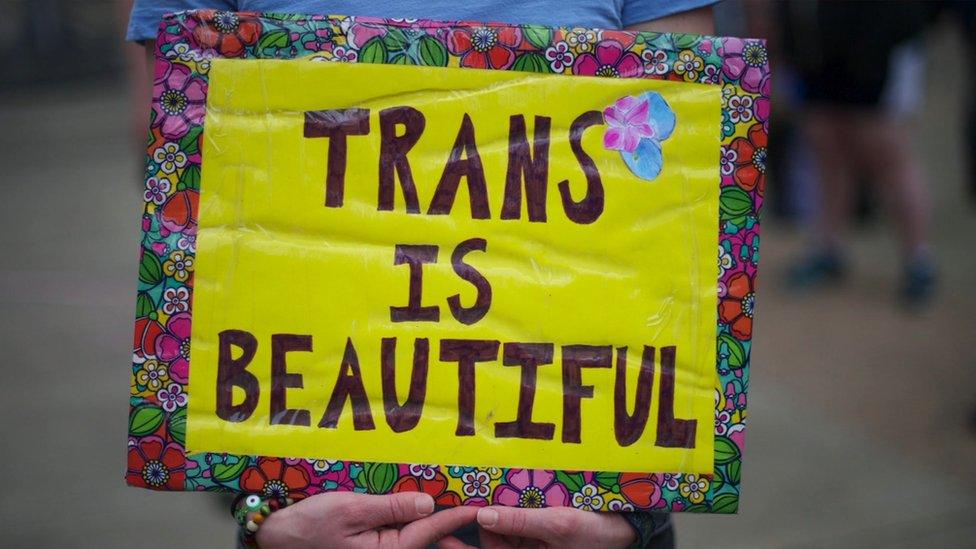Trump signs new transgender military ban
- Published

The blanket ban announced last year was blocked by federal judges
President Trump has signed a memorandum that bans some transgender people from US military service but rolls back the blanket ban he ordered last year.
The new directive adopts recommendations from Defence Secretary Jim Mattis that "transgender persons who require or have undergone gender transition" cannot serve.
But it gives the Pentagon and other agencies some discretion in the matter.
The earlier blanket ban was blocked by federal judges.
The new memorandum, external says that transgender individuals with a history of gender dysphoria are barred from military service "except under certain limited circumstances".
The Department of Defence (DoD) had submitted a report to the president, external which said allowing those with a history of gender dysphoria to serve entailed "substantial risks" and could, by exempting them from existing physical, mental and sex-based standards, "undermine readiness... and impose an unreasonable burden on the military".
It said the Obama administration's decision to allow transgender individuals to serve in the military was largely based on a 2016 study by the Rand think-tank, external, which "contained significant shortcomings".

Gender dysphoria
The experience of distress or discomfort as a result of a disparity between a person's biological sex (assigned at birth) and what they feel their gender to be
Also referred to as transgenderism, gender incongruence or GID (gender identity disorder)
The exact causes are unclear. In some cases hormones that trigger biological sex development may function differently and there are rare conditions such as intersex
Treatment is also varied and aims to reduce the distress. The individual may dress or live in the preferred gender or undergo surgery and hormone treatment to change appearance
Gender dysphoria remains rare but is increasing, with greater public awareness
Source: NHS website

The report found that allowing transgender people to serve openly would have a minimal impact on force readiness and healthcare costs.
The new policy approved by President Trump allows current transgender service members with gender dysphoria to continue serving if they were diagnosed after the Obama administration's policy took effect.
'Cowardly and disgusting'
Transgender individuals not diagnosed with gender dysphoria, will be allowed to serve, "like all other service members, in their biological sex".
Between 4,000 and 10,000 US active-duty and reserve service members are believed to be transgender.
US House Democratic Leader Nancy Pelosi said in a statement that the new policy was "the same cowardly, disgusting ban the president announced last summer".
She said it was meant to "humiliate" transgender service members.
Jamie Ewing was kicked out of the US military before Barack Obama repealed a ban on transgender troops
The American Civil Liberties Union, meanwhile, said the policy was "transphobia masquerading as policy" and was not based on new evidence but rather "reverse-engineered for the sole purpose of carrying out President Trump's reckless and unconstitutional ban".
Mr Trump's earlier ban was first announced on Twitter in July 2017, when he posted: "The United States government will not accept or allow transgender individuals to serve in any capacity in the US military."
The order to reverse President Obama's policy was blocked by federal judges who said it was probably unconstitutional.
It is unclear when the new policy will be enacted and it is likely to face legal challenges. On Friday, the Pentagon said it would continue to comply with federal law, and "continue to assess and retain transgender service members".
- Published30 October 2017
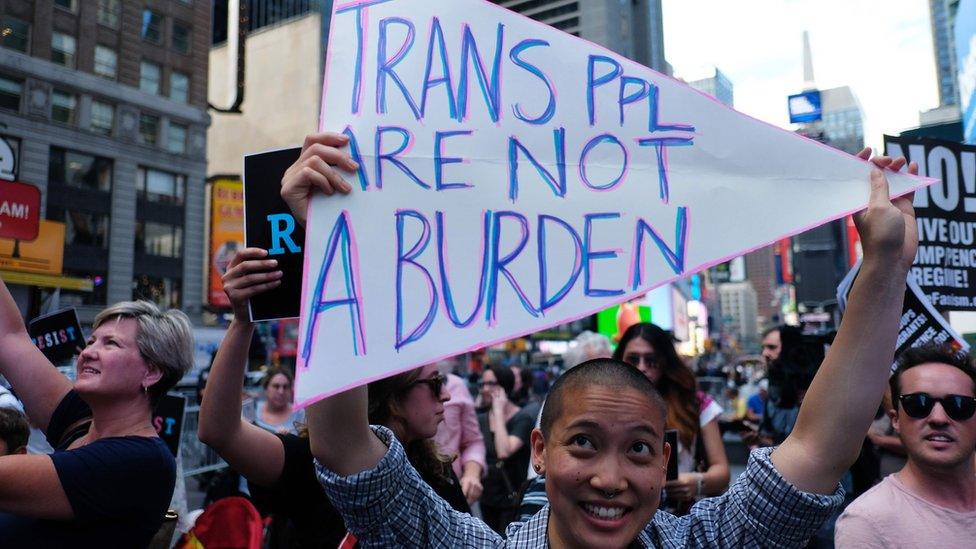
- Published31 March 2017
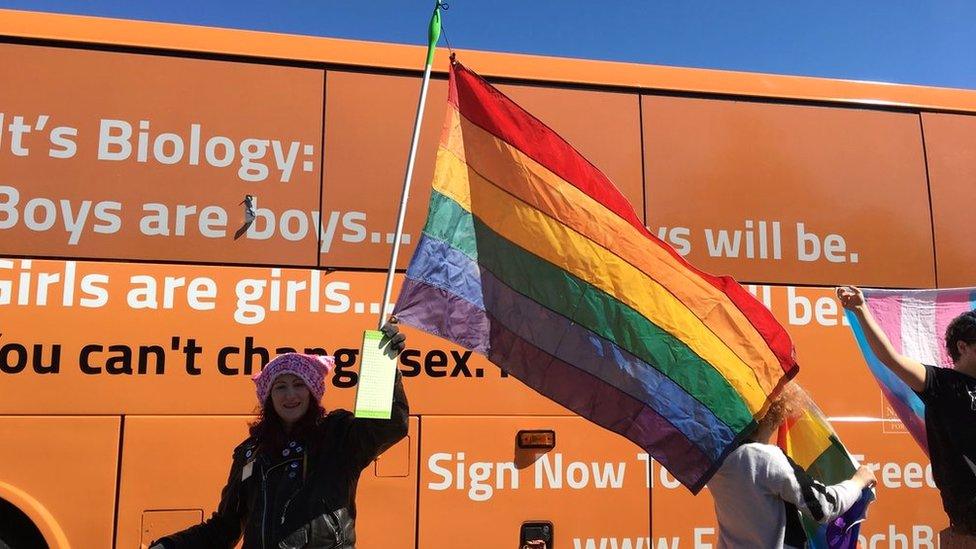
- Published13 February 2018
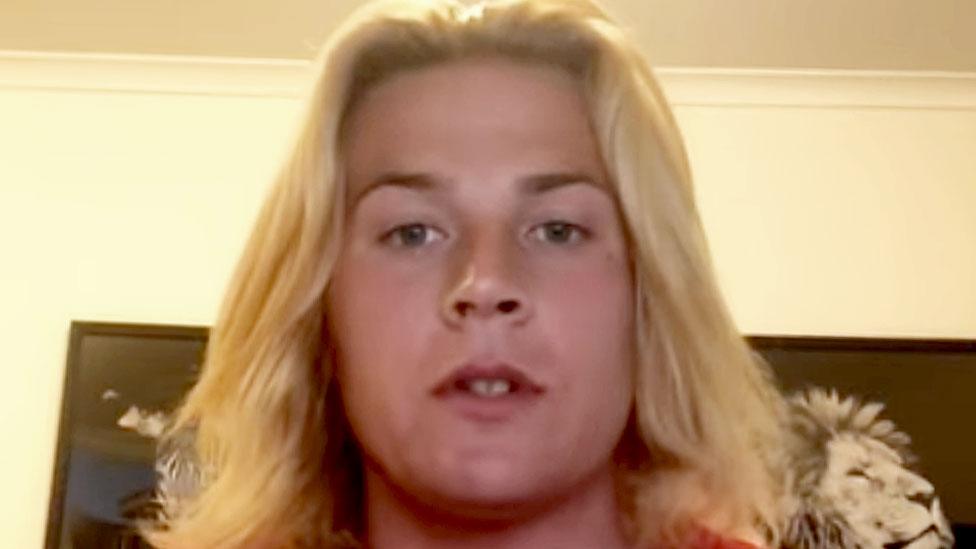
- Published14 June 2016

- Published11 July 2017
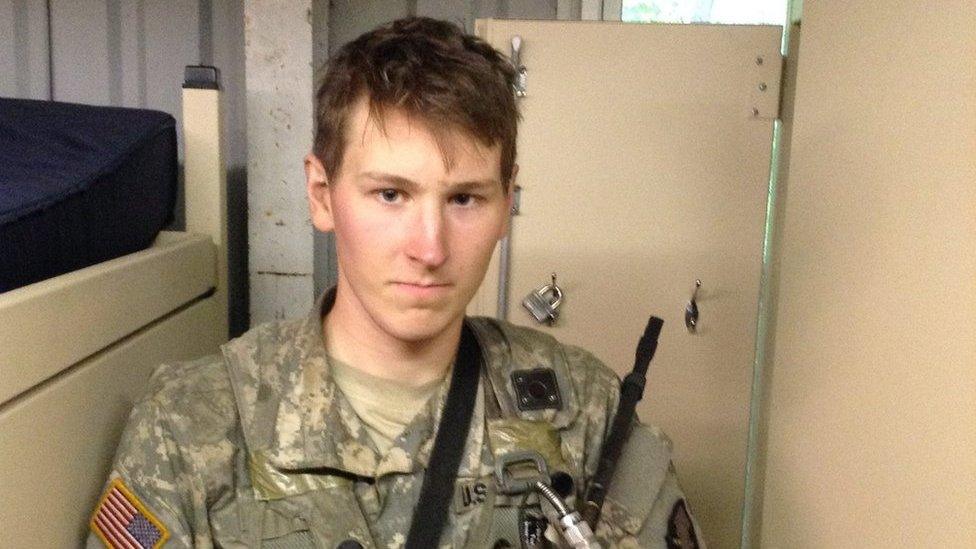
- Published27 July 2017
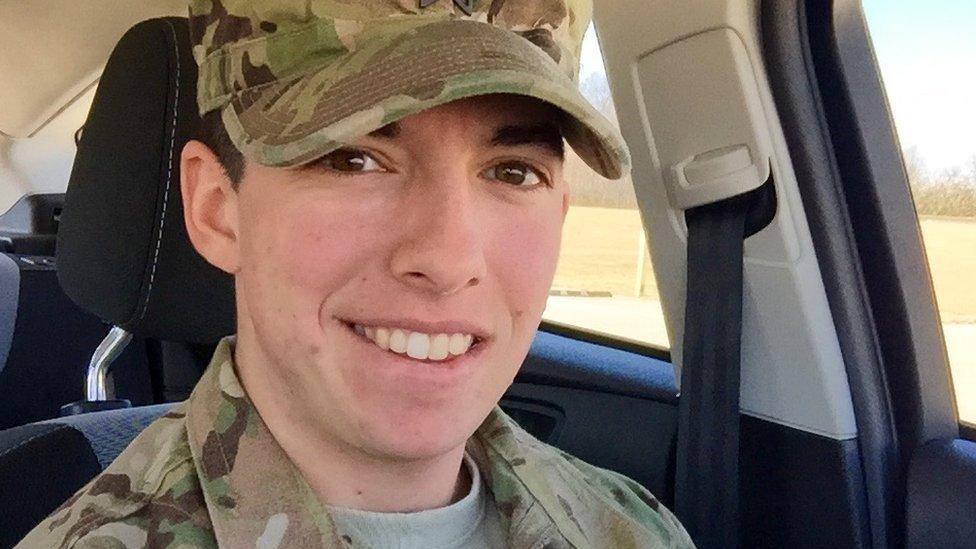
- Published27 July 2017

- Published21 November 2017
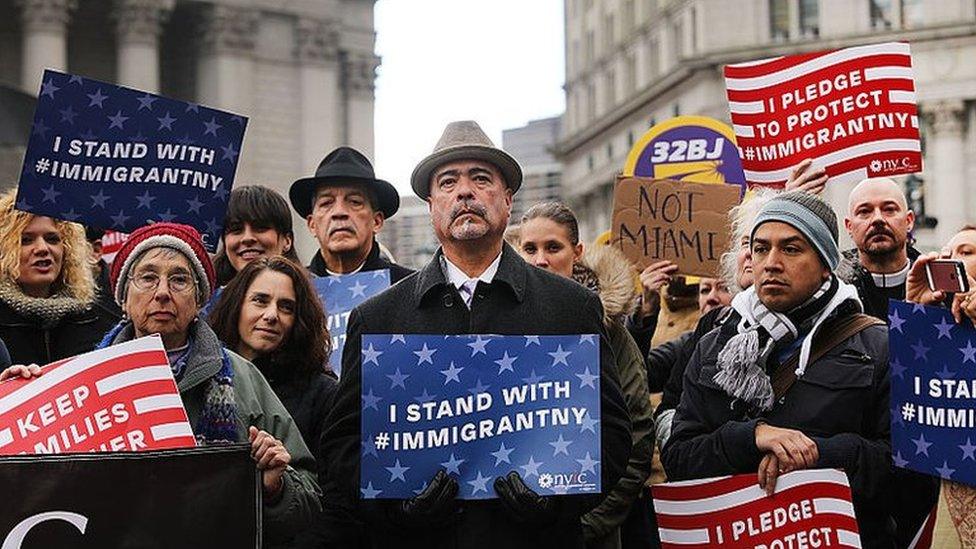
- Published5 March 2018
